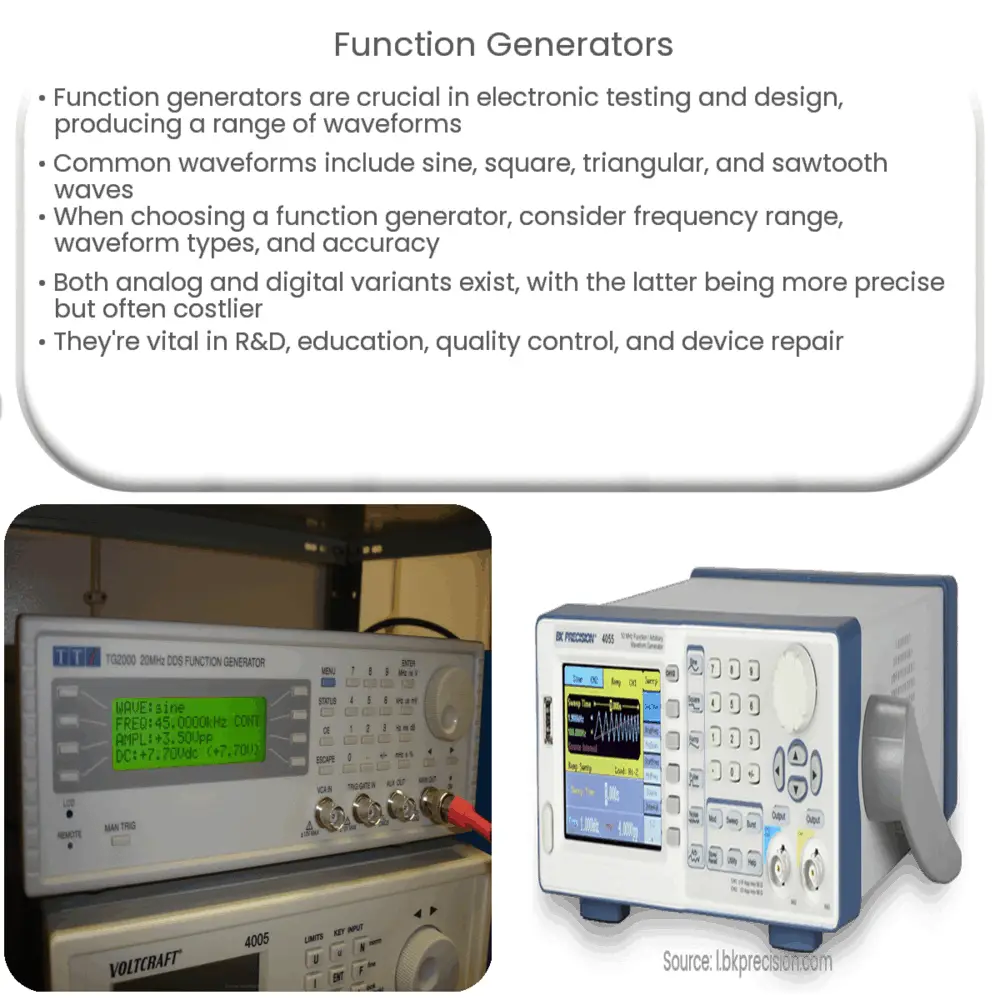Explore the world of function generators, their types, specifications, and applications in electronics and electrical engineering.

Understanding Function Generators
Function generators are versatile and essential instruments in the realm of electronic testing and design. A function generator is an electronic device that can produce a variety of different waveforms at a wide range of frequencies. These generated waveforms can be either repetitive or single-shot in which case, they require an internal or external trigger source.
Types of Waveforms Produced
The most common types of waveforms produced by function generators include:
These waveforms are utilized in a plethora of electronic and electrical projects, for the testing and debugging of electronic equipment, or for creating sound waves. The ability to change the frequency of these waveforms makes function generators a versatile tool in these fields.
Key Specifications of Function Generators
While selecting a function generator for any project or task, it is important to keep in mind the key specifications which include:
There are a number of function generators available in the market, from analog types to more sophisticated digital function generators. The choice largely depends on the specific needs of the task at hand.
Understanding Analog and Digital Function Generators
Analog function generators operate based on analog circuits. These were the original type of function generators but they are still in use due to their simplicity and ease of use. Digital function generators, on the other hand, utilize digital signal processing techniques to generate waveforms. This means they are more accurate and can offer a wider variety of waveform types.
Key Differences Between Analog and Digital Function Generators
There are several key differences between analog and digital function generators:
Applications of Function Generators
Function generators have numerous applications across different fields. Some of the key applications include:
These are just a few examples of where function generators can be used. The actual list of applications is much longer and continues to grow with advancements in technology.
Conclusion
In conclusion, function generators are an integral part of electronics and electrical engineering. They provide a means to generate different types of waveforms, which are essential for testing, designing, and debugging electronic devices. Whether it’s an analog or digital function generator, the choice depends on the specific requirements of the task, including the desired waveform, frequency range, accuracy, and budget. With the advancement in technology, function generators have also evolved, offering more functionalities and becoming more user-friendly. As we look towards the future, it’s evident that the importance and utility of function generators in our technological world will continue to grow.

